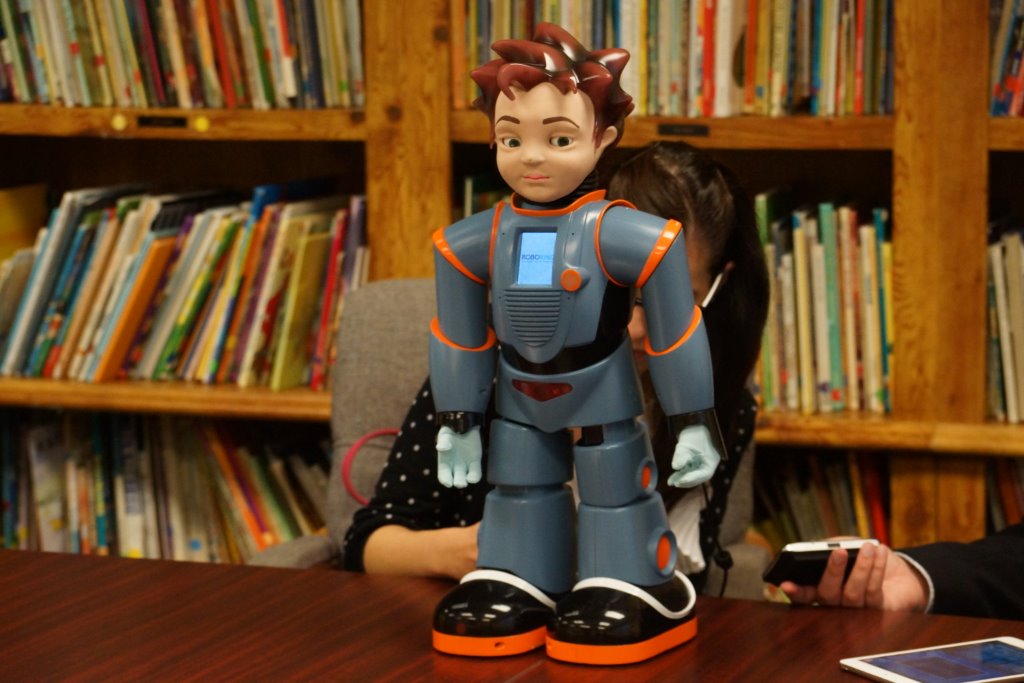Milo – Autistic Children now have a True Robot Friend!

A robot teaching a child is a novel concept and this idea and the product based on it is gaining popularity. RoboKind, a Texas-based robotics company has designed a teaching tool to meet the needs of children suffering from autism. This 22-inch robot is named Milo and it is made to help children to learn to express their feelings, empathy, and get through social situations.
The robot is used to help children function in a regular environment like normal human beings. About 1.5% of U.S. children are said to suffer from autism spectrum disorder, according to CDC statistics. Researchers and experts have maintained that children on the autism spectrum will readily engage with robots than with people and thus learn more.
Need for Robotic Love
According to company representatives, Milo is built for bonding since they believe that children with autism spectrum are different from other children. They have huge deficits in social communication and interaction.
Children with autism mostly do not share information even though they try to make requests. They cannot express or describe things and even when they do not feel good.
With Milo, which features a human-like face, hair and child-like voice, children will associate with friendliness. The robot has a video screen on his chest that display symbols to keep the children focused through audio and video. Milo includes a number of sensors, cameras, and efficient facial recognition software for recording child’s responses and to evaluate their progress in social interaction.
Assessment of Progress
Milo’s lessons are given through two iPads, one is used by the human instructor and the other for the student. The instructor repeats lessons or continues them based on the grasping level of the student.
All throughout these sessions, Milo measures and monitors the student through the eye contact it receives, the promptness of answers, and the student’s interest level. The curriculum includes modules for learning how to be an ideal guest during parties, how to understand expressions and emotions, and in short, be social and friendly.
Milo – The Price of Social Education
Educating an autistic child is pricey as on an average, as nearly $17,000 to $22,000 a year is spent on their training. The cost involved with a Milo robot including the curriculum is $5,000.
About 70 Milo robots are being used, especially in Texas schools and autism treatment centers. Some families have invested in Milo too.
Milo – Charting Progress for Kids Suffering from Autism
Milo is touted to be best suited to work with children who can recognize picture symbols, can answer yes/no to different questions, can understand cause and effect, and can use tablets to communicate.
Using robots is one way of reaching children who are difficult to interact in a social manner and hence many analysts feel that since clinicians are scarce in many places, robots could help. A human component is essential for training though, they say.
Milo’s programmed to teach kids through different social interactions and is fast proving to be more successful than humans to help out the kids with autism. Additionally, the robot speaks 20 percent slower than the average human and has a satisfactory range of basic facial expressions. The best part is that it can repeat any lesson over and over again without getting frustrated like humans.
The CDC states that nearly one of 68 children born in US suffers from diverse range of autism, and Milo is said to be the future solution for many of them.

Ashish Patel is Sr iOS Developer at Nimblechapps – Good Progressive iPhone App Development Company. He believes in smart work. He spends his time dabbling with iOS technologies and SmartWatch Ideas. Looking to venture into the world of Apple HomeKit development and to share thoughts along the way!! He is an avid reader and very passionate about home automation and car automation. He is eagerly waiting for his car to have Apple CarPlay.




